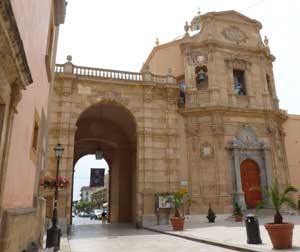Marsala is a coastal town in western Sicily, close to Trapani Airport. The town has ancient origins and some fine exhibits in its archaeological museum. It makes a practical base for a holiday, as it has a couple of good hotels, public transport connections to the other principal sights in this part of Sicily, and ferry services to the Egadi Islands.
- Sicily destinations and practicalities: full menu (at foot of this page)
About Marsala
Marsala’s origins are tied up with those of an unusual archaeological site nearby, the little island of Mozia, also known as San Pantaleo. Mozia was an important colonial stronghold of Carthage in north Africa, itself an early colony of the Phoenician (‘Punic’) people. After the Greeks of Syracuse attacked and destroyed Mozia in 397 BC, most of the island-city’s surviving residents shifted their main settlement to the Sicilian mainland, to an easily defensible site on a promontory: this new town was Lilybaeum, the present-day Marsala. Lilybaeum seems to have thrived for centuries, first under its founders and then under the Romans after their defeat of the Carthaginians in the First Punic War. These hostilities culminated in a naval battle off the Egadi Islands in 241 BC, won by the Romans, which was probably the occasion of the sinking of an ancient warship now in Marsala’s archaeological museum.
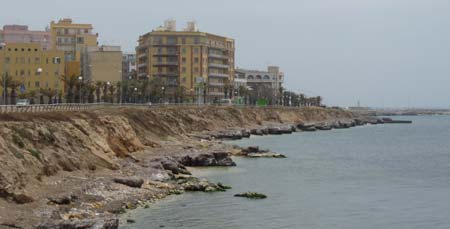
Later, Marsala became a leading town of Arab Sicily, and was an important port for traffic to and from Africa. Under the subsequent rulers of Sicily, the town’s importance declined until a businessman from Liverpool took an interest.
Marsala is nowadays most famous for two things. Firstly, its wine, also called Marsala. After a long period of poverty, Marsala became home to a prosperous wine trade, developed by entrepeneurs at the end of the eighteenth century, led by one John Woodhouse, from Liverpool, who exported the fortified wine. Other English and Sicilian businessmen followed his example, and it was in fact one of these men, Joseph Whitaker, who began excavating and piecing together the history of Mozia.
Marsala’s other claim to fame is as the landing place for Garibaldi and his thousand men (the Mille) on May 11th 1860, starting the chain of events immediately preceding Italy’s unification. Throughout town you’ll find commemorative plaques, and businesses of every description trading under Garibaldi’s name and image.
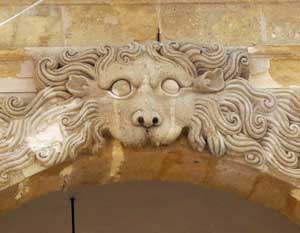
As a tourist destination, Marsala suffers through the proximity of a number of better-known sites nearby such as Greek Selinunte and busy Trapani. However, it is a pleasant historic town in its own right, and both the nearby site of Mozia and Marsala’s own archaeological museum are important destinations for those with an interest in history.
When I visited Marsala, the extensive archaeological zone on its headland was closed off for redevelopment. If this work finishes and the area is tidied up and presented to tourists, it should be a fascinating place to visit, given the many layers of history here, and the valuable finds from the area.
Things to see
The heart of Marsala is the piazza in front of the town’s Duomo, which is dedicated to St. Thomas a Becket. This square, called Piazza della Repubblica or Piazza Loggia, is a pleasant place for a promenade or refreshments at the cafe opposite the cathedral. The Duomo has had an unlucky career, being rebuilt several times on its original Norman foundations. After a seventeenth-century reconstruction, the building collapsed in the nineteenth century, was restored, then was severely damaged again in Second World War bombing. The final touches were put to the facade in the 1950s. You’ll see other restorations of historic buildings in Marsala, many carried out recently. A few buildings have been re-interpreted with a bold modernist style setting off their surviving original features, to mixed success.
Look out for the fabulous lion’s head over the gateway through which Garibaldi led his men, now called the Porta Garibaldi. Other fine palazzi and ornate balconies dot the long narrow streets of the town centre. One of the most elegant buildings is the town hall, alongside the Duomo.
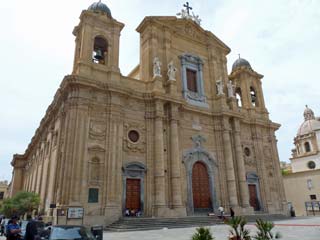
Visitors interested in the local wine will find various bars and enoteche (wine bars/shops) where Marsala can be sampled and purchased. Look out for the world ‘baglio’, used for the local cellars and HQs of wine production. Several of these can be visited, and for drivers, the area has created a ‘wine-road’ for tourists, the Strada del Vino Marsala, connecting wine-producers who offer guided tours and tastings. Note that Marsala is strong stuff.
In addition to the important archaeological museum, described below, Marsala also has a couple of other museums: the Museo Civico and the Museo degli Arazzi Fiamminghi, a museum containing some sixteenth-century Flemish tapestries.
Museo Archeologico
One of the most important things to see in Marsala is the Punic ship (nave punica) preserved in the Museo Archeologico Baglio Anselmi on Lungomare Boeo (also known as the Museo della Nave Punica). To the untrained eye, there does not seem to be a great deal left of the ship other than planking, but this has been enough to allow archaeologists to learn a great deal about ancient ships and naval warfare. Phoenician writing on the wood has helped explain their construction techniques, while other clues indicate that the 35 metre-long galley was built at great speed, ready for battle. For the everyday visitor, rather more accessible are the remains of the ship’s contents, giving an insight into the conditions for the 68-strong crew of oarsmen, who appear to have eaten extremely well, and chewed cannabis leaves as they rowed. On show in a glass case are various small items found among the wreckage, from a spat-out olive stone to bits of rope. The museum is situated on the seafront, out on Marsala’s headland, alongside the currently inaccessible archaeological zone. In addition to the ship, the museum’s two halls also contain other finds from the surrounding area, including the island of Mozia. Items of interest include some exquisite jewellery, a large collection of shell-encrusted amphorae, photos of an early dig on San Pantaleo/Mozia and a fine, headless marble statue of Venus found close to the church of San Giovanni Battista, in the archaeological area near the museum.
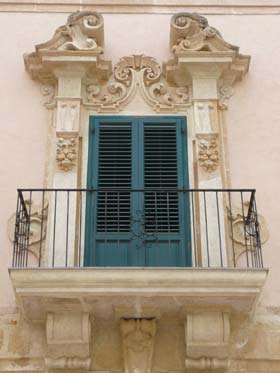
Around Marsala
There are various sights of interest within easy reach of Marsala, especially for travellers with a hire car. You shouldn’t spend time in Marsala without visiting the archaeological island of Mozia and the picturesque salt pans which line the shore between Marsala and Trapani. As well as the museum on Mozia, there is also a museum of salt extraction on the mainland nearby, housed in one of the windmills which dot the shoreline. The neighbouring seaside town Mazara del Vallo is worth a visit to see one of the finest surviving bronze statues of antiquity, a beautiful sculpture known as the Satiro Danzante (Dancing Satyr) fished up from the seabed by fishermen in the 1990s and now housed in its own museum in Mazara. Further afield, you could visit Trapani and Erice from Marsala, as well as the Egadi Islands. The seaside Greek temples of Selinunte are another good excursion and can be reached by public transport (take the train to Castelvetrano then a bus). For drivers, Segesta is also reachable, though it is closer to Trapani, and you may wish to shift bases.
Visiting Marsala
Marsala has a useful tourist information office right in the centre of town, on Via XI Maggio near Piazza della Repubblica. Staff were well-equipped with maps, bus timetables and other information. Marsala isn’t a particularly tourist town, though tour groups stop off here to visit the museum or for Marsala-tastings. If you are just passing through, it is possible to get the gist of the historic town centre and visit the archaeological museum in two or three hours.
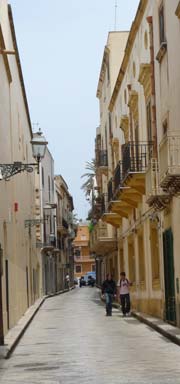
Marsala travel and transport
Marsala is on a railway line which snakes around from Palermo and finishes in Trapani, a twenty-five-minute journey from Marsala. There are regional trains running every hour or two on this route, but note they don’t run late into the evening. The railway station is about fifteen minutes’ walk from the centre of town.
For local transport around Marsala, there is a bus station in Piazza del Popolo, a short walk from the Duomo. Buses to Mozia stop here; you can buy tickets at a news-stand inside the bus station building.
Marsala is very convenient for Trapani Airport. A bus company called Salemi runs services from Marsala to Palermo, Mazara and Castelvetrano. Fast services between Palermo and Marsala also stop at Trapani Airport (Aeroporto Birgi). This airport service runs several times a day, with timetables varying according to the time of year and day of the week – see links below for the timetable. The airport – Marsala journey takes 45 minutes.
There is a useful bus service operated by Lumia which links Marsala with Castelvetrano, Sciacca and Agrigento – a helpful route if you are touring by public transport, though you should check times as it isn’t frequent (currently three times a day; once on Sundays and holidays).
Liberty Lines operate a hydrofoil to Favignana in the Egadi Islands which runs three times a day in winter and spring, and more often in summer when some services also call at the island of Marettimo.
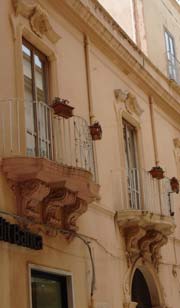
Marsala accommodation
Hotels and B&Bs
There are some good places to stay in Marsala and the surrounding countryside. For location and quality, the best hotel options are probably the Hotel Carmine , an excellent central 3-star in a former monastery, or the four-star Best Western Hotel Stella D’Italia also in the centre of town. Like most Sicilian towns, Marsala has a lot of newish and good B&Bs that are affordable and friendly places to stay. Try the convenient B&B Il Cortile degli Artisti, or the smart self-catering apartments at Anna & Salvo’s House.
> Find a hotel or B&B in Marsala
![]()
Highlights
Favignana – the principal Egadi island, with ferries from Marsala
Useful external links
Punic warship – more information
Autolinee Lumia – buses to Agrigento & Sciacca
ATM Trapani Buses
Liberty Lines – ferries to the Egadi islands
Salemi – buses to Trapani Airport
AST – buses to Trapani
